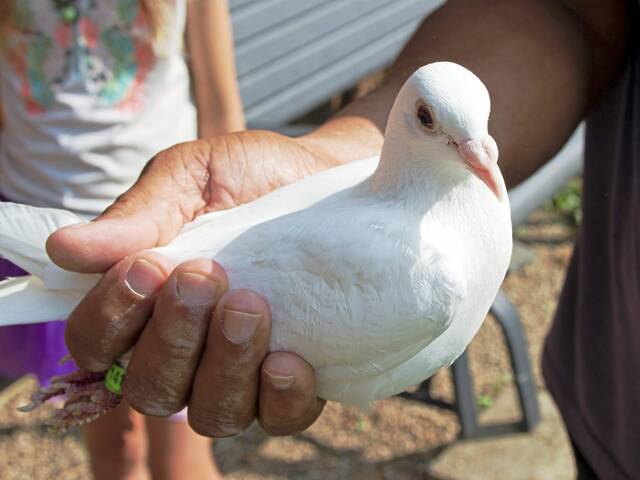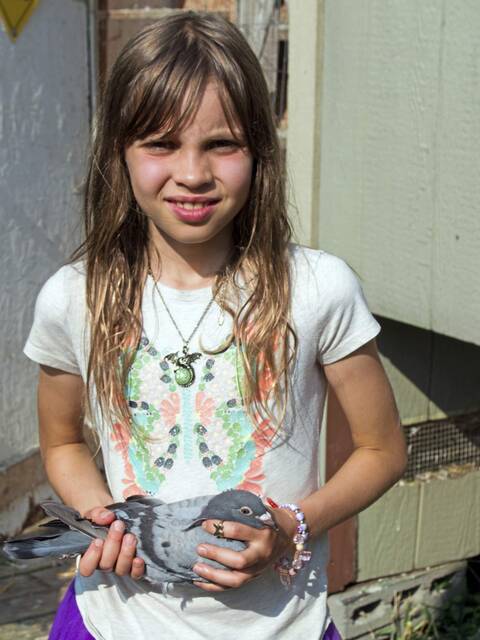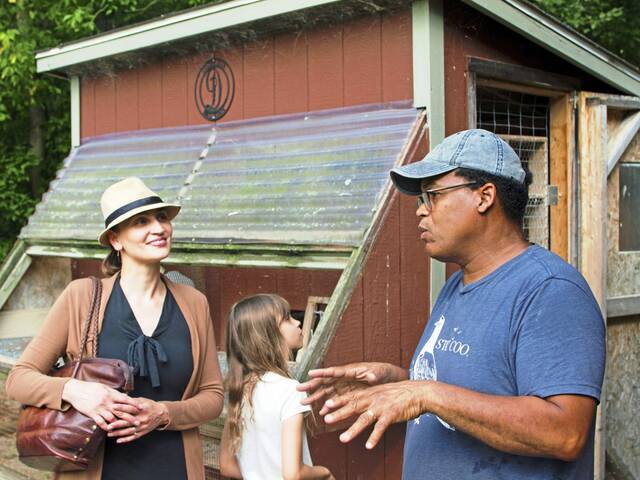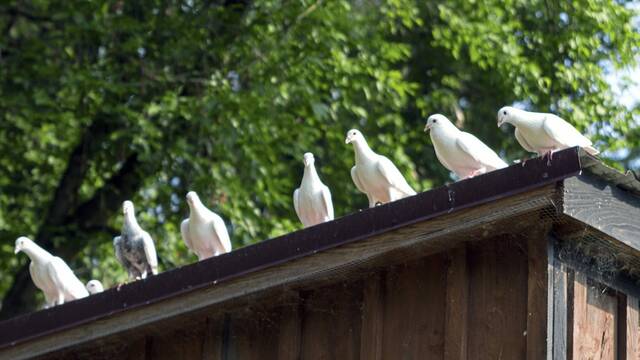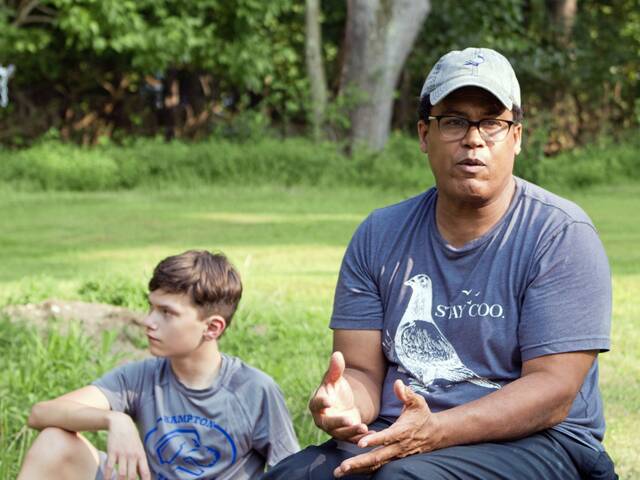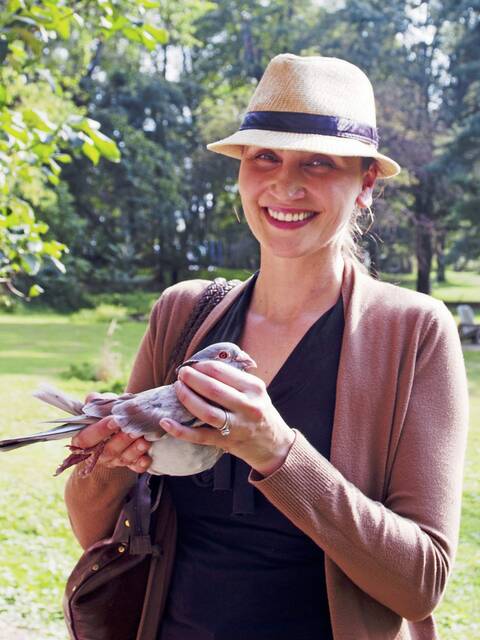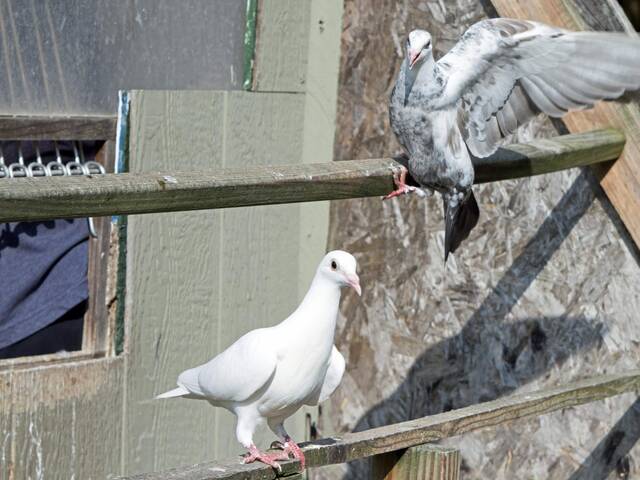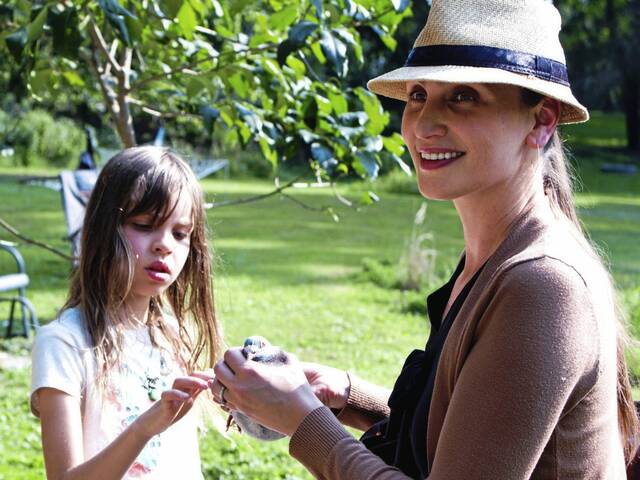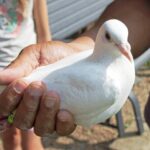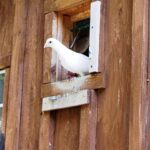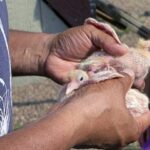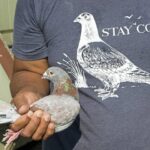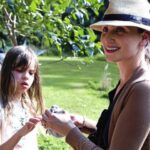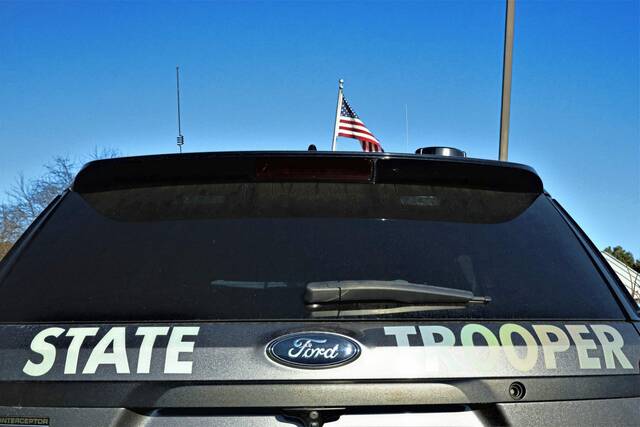One of the most heralded airborne heroes of World War I didn’t fly a plane.
Cher Ami is credited with saving the lives of 194 American soldiers, for which he received the Croix de Guerre from the French government to honor bravery on the battlefield.
Not bad for a bird.
That’s the type of story Hampton resident Ken Haselrig enjoys telling in defense of homing pigeons like Cher Ami, who survived taking an enemy bullet to deliver a message that led to the 1918 rescue of members of the U.S. Army’s 77th Division.
As the founder and owner of Dovecote Missions LLC, Haselrig has his own mission to dispel notions about pigeons as disease carriers, such as the one propagated by a 1960s-era New York City parks commissioner who called them “rats with wings.” Woody Allen didn’t help with his repeating the allegation in his film “Stardust Memories.”
“Prior to that, for thousands of years, we had this close association with them,” Haselrig said. “So we would not have a long-standing relationship with something that was going to kill us. Right?”
The retired science teacher has a healthy relationship with the dozens of pigeons he keeps in a sizable, well-maintained backyard loft — or dovecote, to use the Middle English-derived term — as an avocation that became a business.
Dovecote Missions specializes in providing white pigeons to release at occasions such as funerals, memorial services and weddings. As fellow members of the avian Columbidae family, Haselrig’s birds are relatives of the enduringly peace-symbolizing dove.
‘600 miles in one day’
And their homing instincts allow them to travel considerable distances in returning to Hampton.
“If conditions are right and they’re happy and healthy, they can fly 600 miles in one day,” Haselrig said. “The worst that could happen is that they’ll roost overnight and come back the next day.”
He recalls visiting a farm as a youngster, where “the guy just happened to have pigeons that he was watching for his brother.” His interest sufficiently piqued, Haselrig eventually started raising his own birds.
“My wife said, ‘Hey, you know you can actually make a business out of that, maybe when you retire from teaching,’” he said about Celine Haselrig, who’s a teacher, too. “It took a little time, but now we’re pretty steady. We do quite a few events.”
Among them are friendly pet visits to nursing homes, during which residents can hold the docile, soft-feathered birds. And Ken continues to serve as an educator, providing “Pigeon Heroes” programs about Cher Ami-type missions carried out in both World Wars.
Back at the Haselrig home, he has assistance from loft manager and Hampton High School student Tyler Florcik in feeding the birds and making sure they have plenty of water, while helping to ensure everything is as clean as possible.
The pigeons’ primary residence is a 20-by-12-foot building standing 8 feet high, equipped with small doors on each side of the roof that, when open, allow them to fly in and out freely. And they have plenty of room inside.
“You could probably hold 120, 130 birds in here,” Haselrig said. “But I like to keep it 70, 75 at the very most.”
As such, when the numbers increase, he makes sales to responsible buyers.
‘They’re really smart’
With regard to reproduction, hens typically lay two eggs at a time, albeit one day apart. They hatch a couple of weeks later, according to Haselrig.
“The crazy thing is, they double in size every day for, like, the first two weeks of life,” he said.
Charting their rapid growth served as the basis for a fifth-grade experiment by one of his sons. Benny Haselrig, later a three-time All-Greater Allegheny Conference wideout at Hampton High School, used a scale for equivalent measurement.
“He put pennies on one side and a newborn chick on the other,” Ken said. “First day, it weighed four pennies. Second day, it weighed eight, then 12, until the bird couldn’t fit on the scale anymore.”
By the way, look for Benny’s brother, Willy, playing wide receiver and defensive back for the Talbots as a junior this season.
And look for their father to keep spreading the good word about pigeons.
“They’re really smart,” he asserted. “They’ve done experiments where they can recognize a face from a photograph. All kinds of work has been done in that regard.”
Haselrig cited a study that, according to Scientific American, suggests that the common pigeon make reliable distinctions “between benign versus malignant tumors and, in doing so, could help researchers develop better cancer screening technologies.”
Now, that’s the type of story a retired science teacher enjoys telling.
For more information, visit www.dovecotemissions.com.


